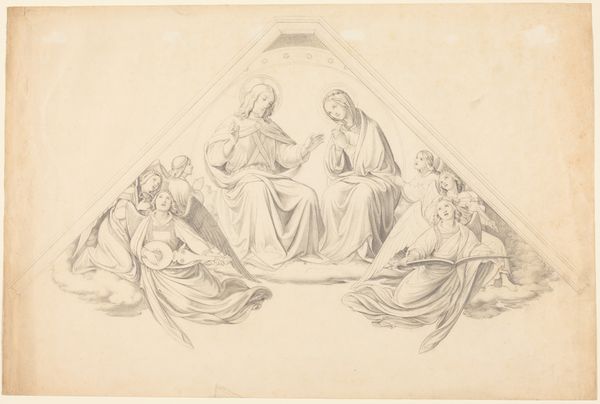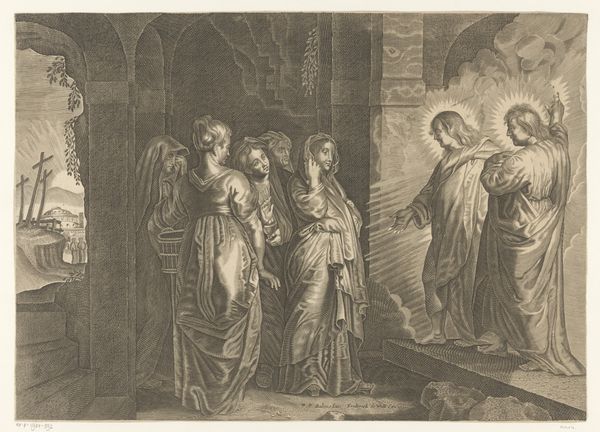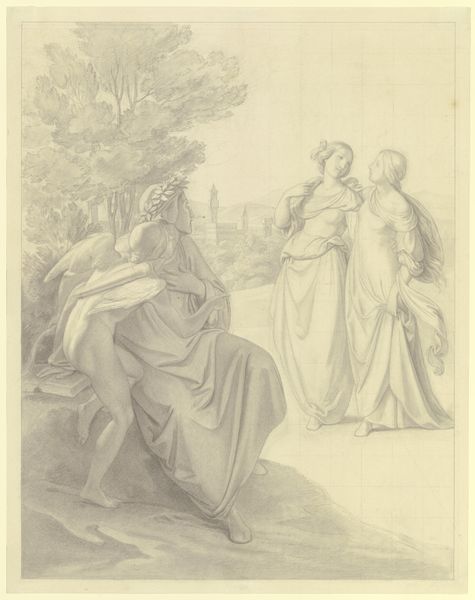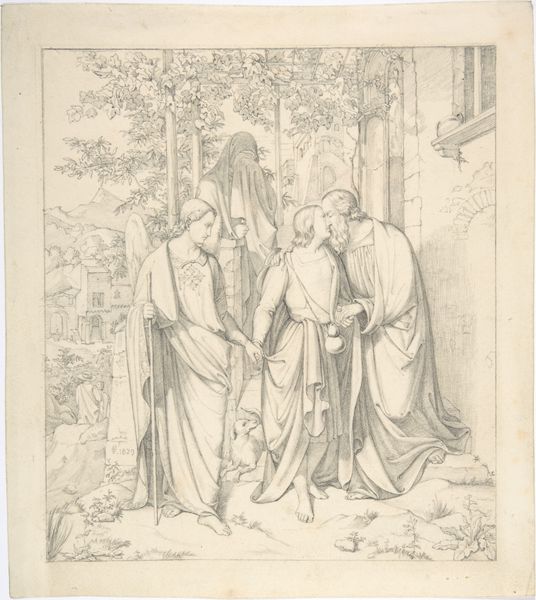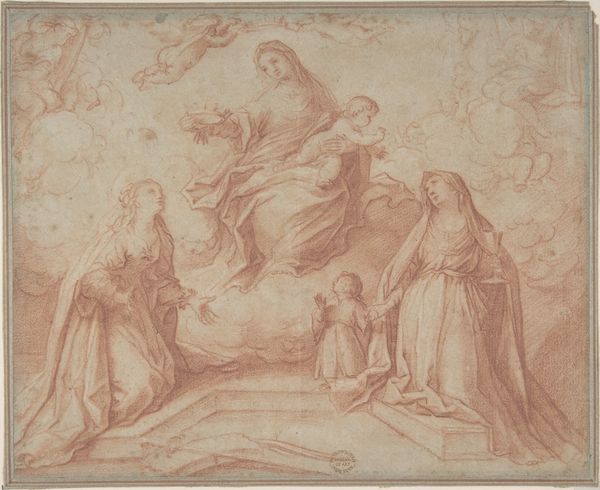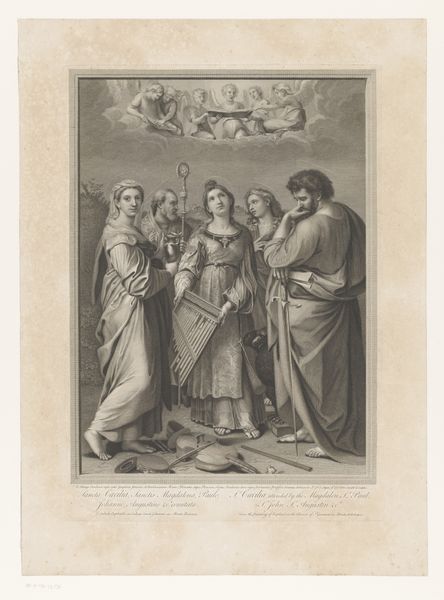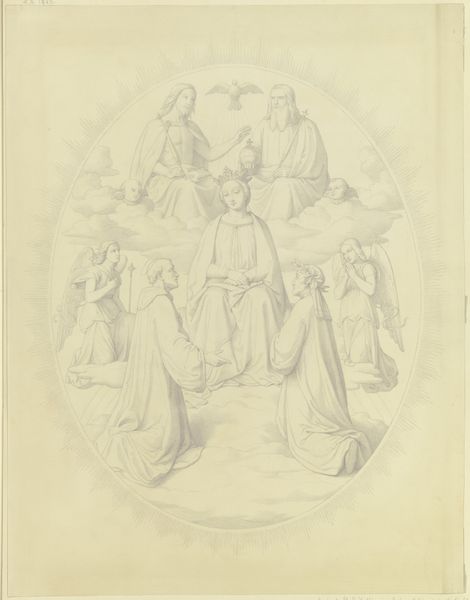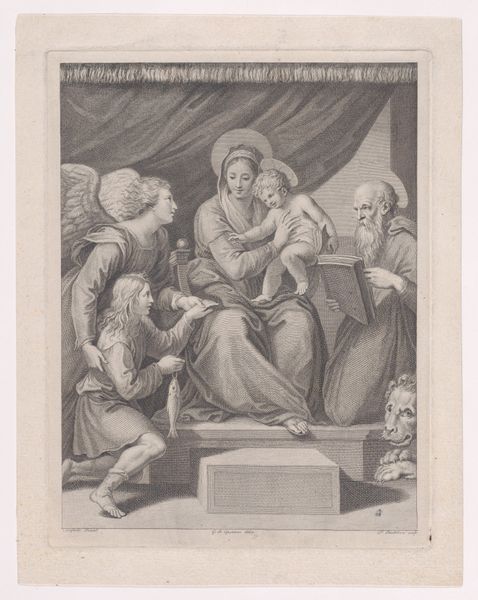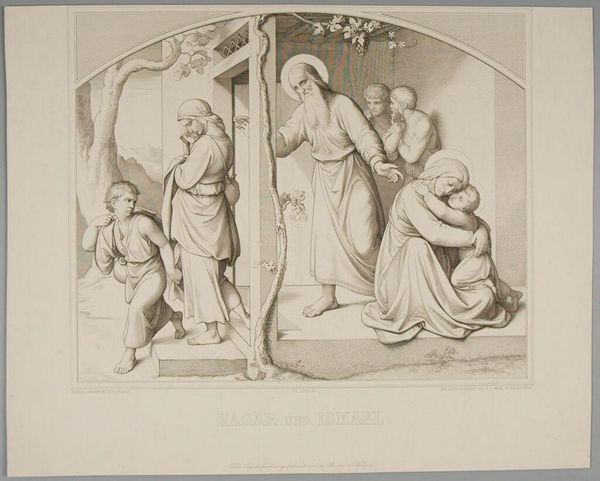
Allegorien der Malerei, Architektur und Bildhauerkunst (Motiv der alten Fahne des Städelschen Kunstinstituts)
0:00
0:00
drawing, dry-media, pencil
#
portrait
#
drawing
#
allegory
#
dry-media
#
pencil drawing
#
pencil
#
history-painting
Copyright: Public Domain
Editor: So, here we have "Allegorien der Malerei, Architektur und Bildhauerkunst", it seems to be a pencil drawing, though I am not sure when it was created or who the artist was. The artwork showcases three figures who look like allegorical representations in classical robes. There's a certain ethereal, delicate quality to it, especially with the use of pencil. How should we interpret a piece like this? Art Historian: Let us put aside matters of explicit historical context momentarily and analyze what we visually perceive. Consider the composition, its careful balance and symmetry. We have three female figures rendered in detailed drapery, which leads our eyes vertically across the page. Do you see how the arched background repeats the curves of their crowns? Note also the delicate texture created by the pencil hatching and cross-hatching. Editor: I notice it now. How the lines of the clothing follow those vertical lines. So what do you mean with all of those features, in terms of significance? Art Historian: What seems more critical? Does the emphasis fall upon the rendering of the volume and light through detailed strokes or on any emotive message from an allegorical reading? Is it in how they engage with each other, perhaps implying a harmony between these creative disciplines? Editor: I guess…the execution? Because all figures are nearly the same height. There is something that stands out more regarding the lines and shadow in their robs, rather than in their faces or hand details… almost like emphasizing a design principle through their placement as you noticed before… So, if the structure and material aspect are vital. Is the title just, arbitrary? Or should the message fall into second ground when thinking about the relevance of art itself? Art Historian: Precisely. The title, while providing some thematic context, is arguably secondary. The inherent qualities of form, line, texture and compositional harmony are in dialogue. A semiotic reading risks obscuring this underlying formal conversation. And the meaning comes through its forms. What is the significance of emphasizing lines over faces in art? Editor: Oh! Wow. Never would thought of it! Thinking in forms and not just on message. It really offers a refreshing way to approach an artwork. Art Historian: Indeed. The artwork transcends mere illustration by achieving aesthetic impact solely through the arrangement of its inherent artistic elements. And understanding all this aspects may bring new significations, wouldn’t you agree?
Comments
No comments
Be the first to comment and join the conversation on the ultimate creative platform.
